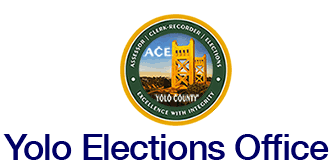FAQs: Learn More from Trusted Sources
Trusted Facts about Vote-by-Mail Ballots
Incorrect information is often spread about vote-by-mail ballots. Find the facts below and spread the knowledge!
FACT: "Absentee Ballots," "Mail-in Ballots," "Vote-by-Mail Ballots," and "Mailed Ballots" are all the same. The terms are interchangeable in California.
Sometimes people outside of election administration use the terms to describe different processes. Always find out how the person defines their words. Remember, in California, all ballots are treated the same.
Myth: Vote-by-Mail Ballots and Absentee Ballots are different, and therefore Vote-by-Mail (or mail-ins or mailed ballots) are more prone to fraud.
FACT: The ballot you receive when voting in person contains the same information and is counted in the same manner as a vote-by-mail ballot.
The paper is the same; the printing is the same; the barcodes indicating your precinct number are the same.
Myth: Vote-by-mail ballots are different from ballots voted in person.
FACT: Vote-by-mail ballots have been around for decades. Even before 2022, when new state law required every registered voter to be sent a vote-by-mail ballot, 80% of Yolo County voters had signed up to receive their ballots by mail for every election.
One of the first known uses of absentee voting was during the American Civil War - allowing American soldiers to vote in the 1864 presidential election. More recently, astronauts who are in orbit during an election have been voting from space since 1998. Astronaut and microbiologist Kate Rubins cast her ballot from a make-shift voting booth on the International Space Station 2020.
Myth: Vote-by-Mail ballots are new and are partisan.
FACT: Vote-by-mail ballots are mailed only to eligible and active voters.
Election Offices mail the ballot to the address the voter provided when they registered to vote. Ballots are not forwardable to a new address. If the voter moves, they need to update their registration. If you receive someone else's ballot, let us know. The voter with the wrong address will be inactivated and we will no longer mail anything to them.
Myth: Vote-by-mail ballots are sent to everyone: deceased; out of state; non-citizens, voters not registered.
FACT: Every returned vote-by-mail ballot envelope is checked against the voter's signatures in their voter registration record. If the signatures on file do not match or if there is no signature on the envelope, the ballot is challenged and will not be counted until the voter resolves the issue.
Election Officials in California can use additional documents signed by the voter to verify signatures. Including previous forms on file and previous vote-by-mail envelopes. If the signatures still don't match, the Election Office automatically notifies the voter and sends a form to "cure" the challenge.
Myth: Vote-by-mail ballots are prone to fraud.
FACT: Yolo County voters can visit any Vote Center within the county to vote in person.
There are 13 Vote Centers prior to Election Day and on Election Day - giving you many more options to vote in person.
Myth: Vote-by-mail ballots prevent me from voting in person.
The Yolo County Elections Office Website is intended to be comprehensive; however, we can't cover everything.
This Office values an informed electorate and links videos here that may be helpful in learning more about elections from trusted sources. We encourage informed voters to share facts with friends and neighbors.
Vote-by-Mail (VBM)
from the Stanford-MIT Healthy Elections Project
- Elections Explained! - Ballot Curing This video explains the general process of how a voter can resolve the issue of their ballot being rejected.
- In Yolo County, specifically, use the Unsigned Ballot Statement form if you forgot to sign your envelope. Use the Signature Verification Statement form if your signature on the VBM envelope did not match our files.
- Elections Explained! - How Mail-in Ballots are Processed This video explains the steps involved in counting your vote-by-mail ballot.
- For detailed information about the process in Yolo County, please review our webpage called "How Vote-By-Mail Ballots Are Counted."
- Mail-in Ballots: 4 Types of Verification This video explains what elections officials do to keep the vote-by-mail ballot process secure.
- To learn more about how you observe these processes in Yolo County, please check out our Election Observer webpage.
Voting Equipment and Security
from Hart InterCivic
- Verity Central - Easy Vote by Mail This video from Yolo County's voting system vendor provides an overview of our central ballot scanning operation.
- Hart InterCivic Security FAQs Yolo County's voting system vendor's website provides answers to frequently asked questions about their system, including their supply chain.
Ballot Drop Boxes
from "The Election Group"/Stanford-MIT Healthy Elections Project
- Ballot Box Retrieval Teams This video explains how ballots are transferred from a ballot drop box to an elections office.
- Are Ballot Drop Boxes Really Secure? This video explains the security of ballot drop boxes.

